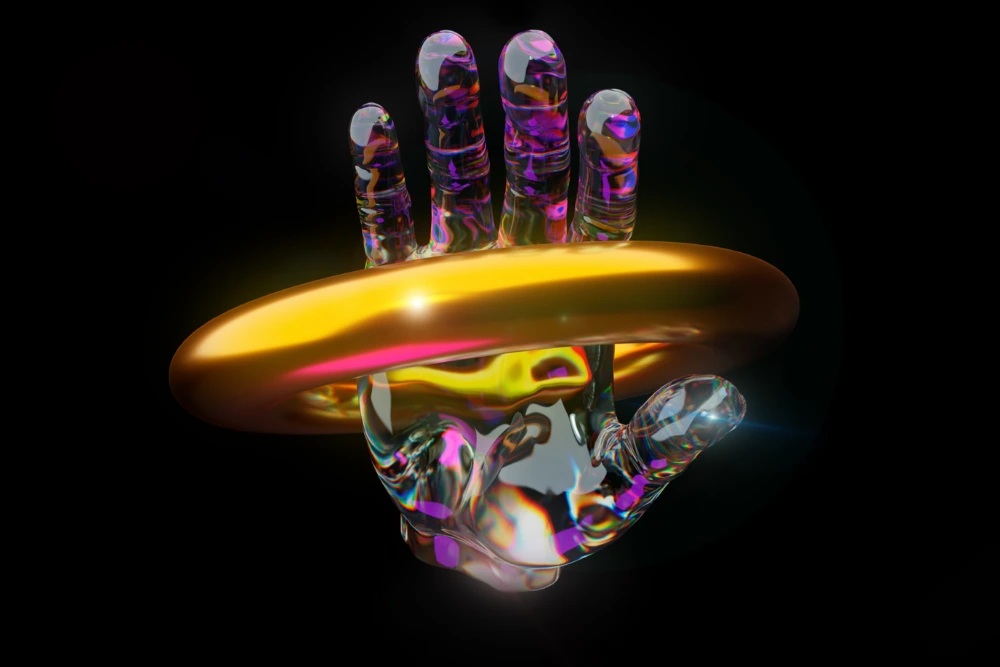On March 11, 2021, an extraordinary event took place in the art world, when Christie’s Auction House sold a digital art piece entitled, “All Days: The First 5000 Days”, by the digital artist known as Beeple. The digital art piece sold for a record-breaking amount of $69.3 million and the term NFT was introduced into public awareness. NFT art has become a trending topic and is being talked about in mainstream media as more people are exposed to what it is, how it works and where this trend is heading.

July 26, 2022
Digital art has been around for quite some time but with the emergence of NFTs and what that means for the artists in how they sell their art, it’s the beginning of a new era for said artists. It means that they can now create financial value from their digital artwork.
NFT art is a digital art form, where NFT stands for non-fungible token. What makes art valuable is its uniqueness and what interests art collectors throughout the years. Now NFT art is a unique digital asset that can be traded in the digital world. In order to prove it’s uniqueness there is a digital certificate, proving ownership of a unique virtual or physical, in this case, NFT artwork that someone has produced.
Once one has ‘minted’ one’s digital art piece into an NFT one can sell through the various platforms which offer such a service. NFTs are creating new art communities and giving artists new, more direct ways to interact with their supporters.
The blockchain technology, a digital transaction system that records information, is what gives the ability to create NFTs because they are registered in a unique way, hence turning them into a non-fungible asset. Non- fungible makes them non- interchangeable, non- divisible, and unique in the way they function. Once an NFT art piece is created, it’s ‘minted’ or tokenized on the Blockchain and makes it very easy for tracking copyright ownership and maintaining records of the NFT art.
The concept of community is an important one in the metaverse. The community of people that share a common interest has an influence on the pricing of NFT art as well. The NFT art price will be defined by the subjective value of the created work. This is based on basic economic supply and demand, where its value can increase or decrease in the future depending on the circumstances.
It’s still early days in this relatively emerging industry to clearly state whether NFT art has longevity. However, most likely that the NFT artwork craze will find its holding alongside the emergence of this new economy. For the moment, more people are banking on digital artwork and investing in virtual collectibles, enabling even more artists.
The fact that digital art offers such freedom of expression is considered a very important aspect of this emerging NFT system. It allows digital artist to feel more inclusive in the art world, as they grow their communities and educate each other of the different forms of digital art they are creating. For investors looking on places to invest their money, NFT art could very well be a lucrative option as certain digital artists gain notoriety and where other mixed media artist merge their art into NFT art as well and drop collections for their already existing ‘following’, i.e., community. In addition, pricing of artwork and how galleries and artists get paid also works differently when it comes to NFTs. For example, NFT contracts may include clauses so artists get paid a royalty on each subsequent transaction that take place after the initial sale. It also remove the intermediary of a gallerist let’s say that also would take a cut.
There are already several notable NFT art projects out there, here 5 you should not miss knowing about:
A new arena has opened in the art world, raising questions about value and opinions on quantity and quality. NFT artists may prefer to stay anonymous, hiding behind their digital profile, yet garnering the following and fame nonetheless. NFT art although still in its early stages will probably continue moving forward, having the potential to transform the whole creative industry.
NFT art stands for digital images that have been “minted” as a “nonfungible token” (NFT).
Anyone can make a token and sell their creations as an NFT, they just need to have a wallet and mint their creation.
If you are buying NFT art you are in fact buying a digital asset usually through cryptocurrency and then its usually encoded with a unique code through the blockchain technology.
The community and the followers of the specific artist can increase the value of an NFT art piece.
NFT art can be purchased on a number of Marketplaces, some of the more notable ones are: Coinbase, Nifty Gateway, MakersPlace but there are many more.


Need Our Help To
Launch Your Own
Web3 Project
Use Certhis tools to level-up your
interaction with your community
Book A Meeting
Latest Articles